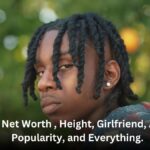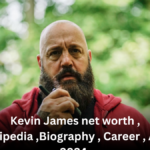Catherine Liddle Wikipedia, Wiki, Parents, Bio, Partner, Sister
Catherine Liddle Wikipedia, Wiki, Parents, Bio, Partner, Sister – People often talk about the “voice to parliament” as if it’s something mysterious that doesn’t do much at all, or it does too much. But what we’re missing in this debate is the reality of the challenges Indigenous children still face, and how far we are from making real progress.

Catherine Liddle Latest News
Critics of the “voice” of Catherine Liddle bring up all sorts of arguments against it, but the evidence is growing that Aboriginal and Torres Strait Islander children are falling through the cracks of government support.
While there are heated debates about whether the “voice” will really make a difference, report after report shows the tough truths about the challenges still faced by Indigenous Australians. Recent reports from the Productivity Commission, which is like a government research agency, highlight just how far we have to go.
These reports remind us of how government policies and programs have failed to improve education and development for Indigenous children. In 2021, a shocking 65.7% of Indigenous children started school developmentally vulnerable, which means they were not ready for school. And it’s even more concerning when you realize this number is higher than in 2018.
More and more Indigenous kids are being taken away from their families and put into foster care. This doesn’t happen because they’re not loved; it happens because vulnerable families are caught in systems and policies that were designed without their input.
In simple terms, we’re not making real progress; in fact, we’re moving backward.

These statistics aren’t just numbers on paper. They show the real struggles our nation faces. They remind us how much work is still needed and how challenging our situation is.
Unfortunately, it’s not a surprise to see progress being halted, and sometimes reversed, especially for Indigenous children.
The Productivity Commission’s review of the Closing the Gap agreement is clear in its criticism of the government’s lack of ambition in following through on the agreement’s priorities. It found that governments were not sharing power or decision-making with Indigenous people, as they had promised when they agreed to the agreement.
Let me be clear about this: these failures are not our fault. Governments at all levels are not holding up their end of the deal. They’re not listening to us; instead, they’re sticking with their old ways of doing things.
They are slow to change punitive policies like the “activity test,” which makes it hard for Indigenous children and families to access early education.
There have been some positive changes, but they don’t go far enough. Even though the evidence shows that removing the activity test requirements would increase early learning for Indigenous communities, these requirements are still in place.
Neglecting a child’s early education has lifelong consequences, but not much has been done to truly help Indigenous kids thrive. When they have access to high-quality early education, they do better in school, stay healthier, and are less likely to have problems with child protection and the law.
Many people wonder what practical purpose a “voice to parliament” would serve and how it could really make a difference in the lives of Indigenous Australians.
These reports and their findings give a clear answer: an advisory body with input from our communities would help break down the barriers that hold back Indigenous children from getting a good education and a better life.
A “voice” would inform the government about the problems caused by policies like the activity test. It would shed light on the lack of investment in children’s early years. A “voice” would secure a brighter future for Indigenous children.

The need for a “voice” has never been greater. Australians need to understand how important it is and how much it could change the lives of our children and their futures. We must listen to their voices and take action.
Who is Catherine Liddle?
Catherine Liddle is someone who has had important jobs in different organizations. She used to be the CEO (which means the boss) of First Nations Media Australia. Before that, she worked as a Regional Director for a group called Jawun Indigenous Corporate Partnerships, focusing on Central Australia. Catherine has also worked in high-up positions in places like the Northern Territory Education Department, the ABC, and NITV/SBS.
Who is the CEO of First Nations Media Australia?
The CEO (the top leader) of First Nations Media Australia is now Professor Shane Hearn. He’s the person in charge of this organization that helps Aboriginal and Torres Strait Islander media.
Read More Bio








